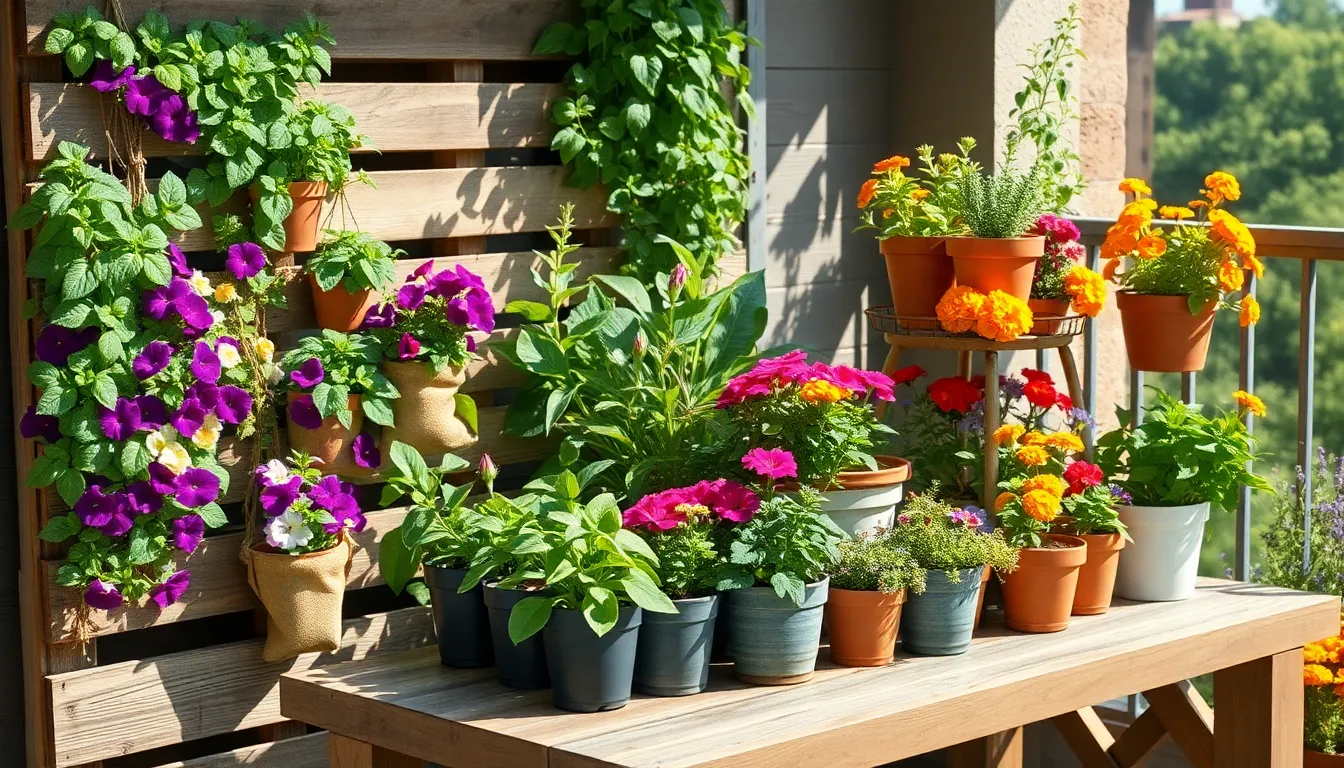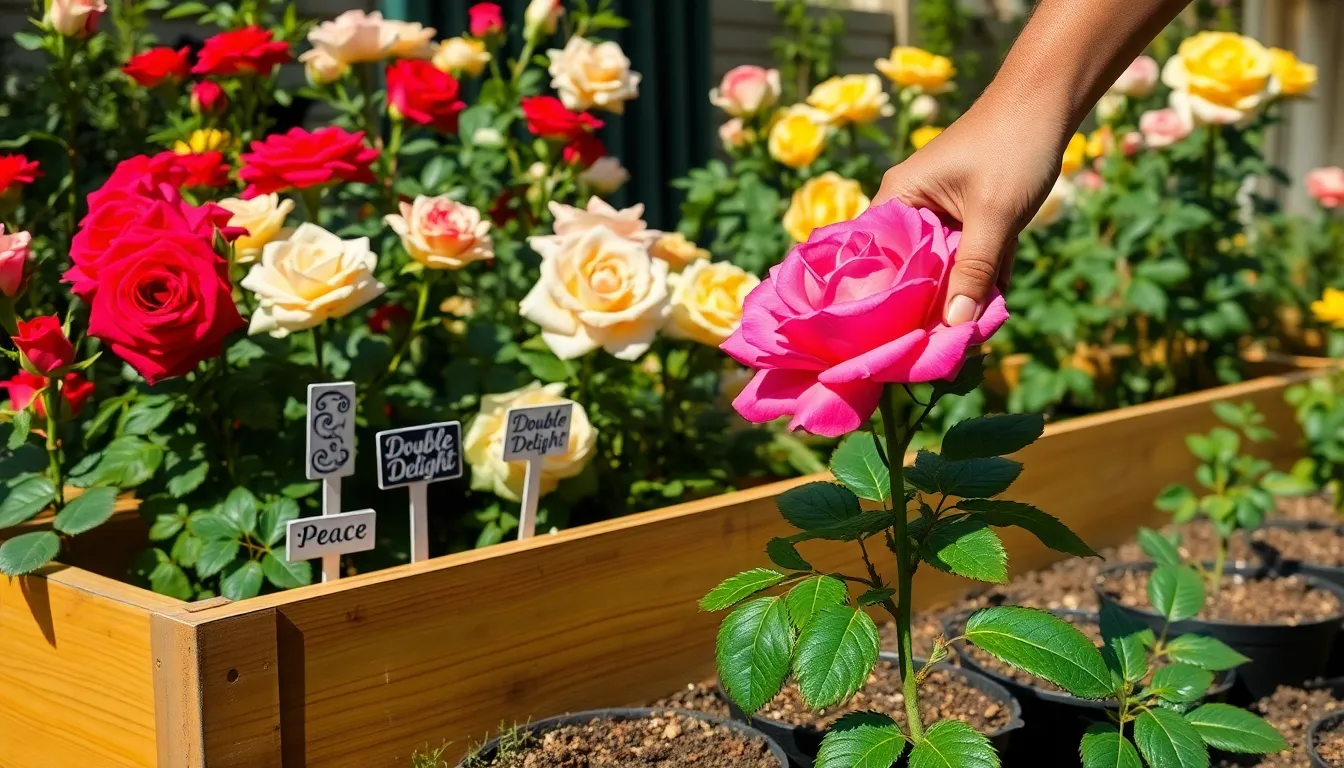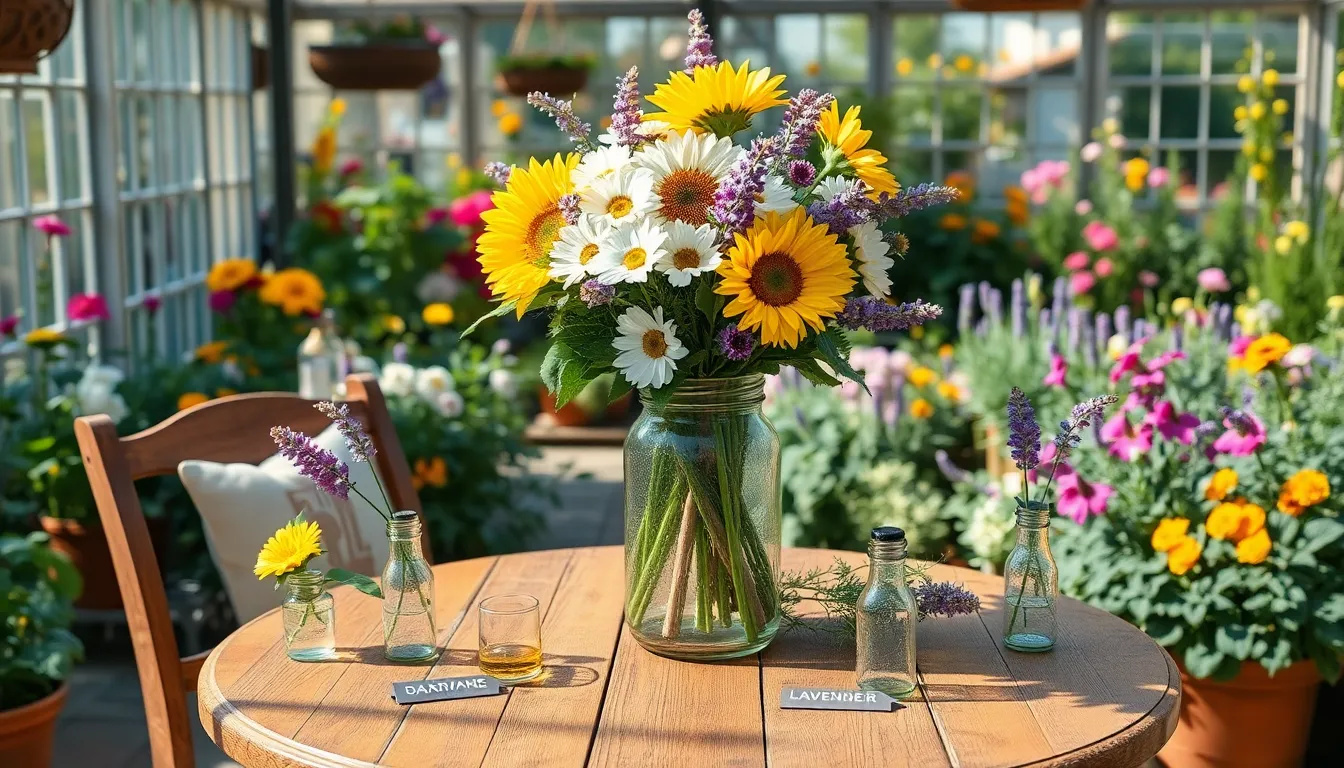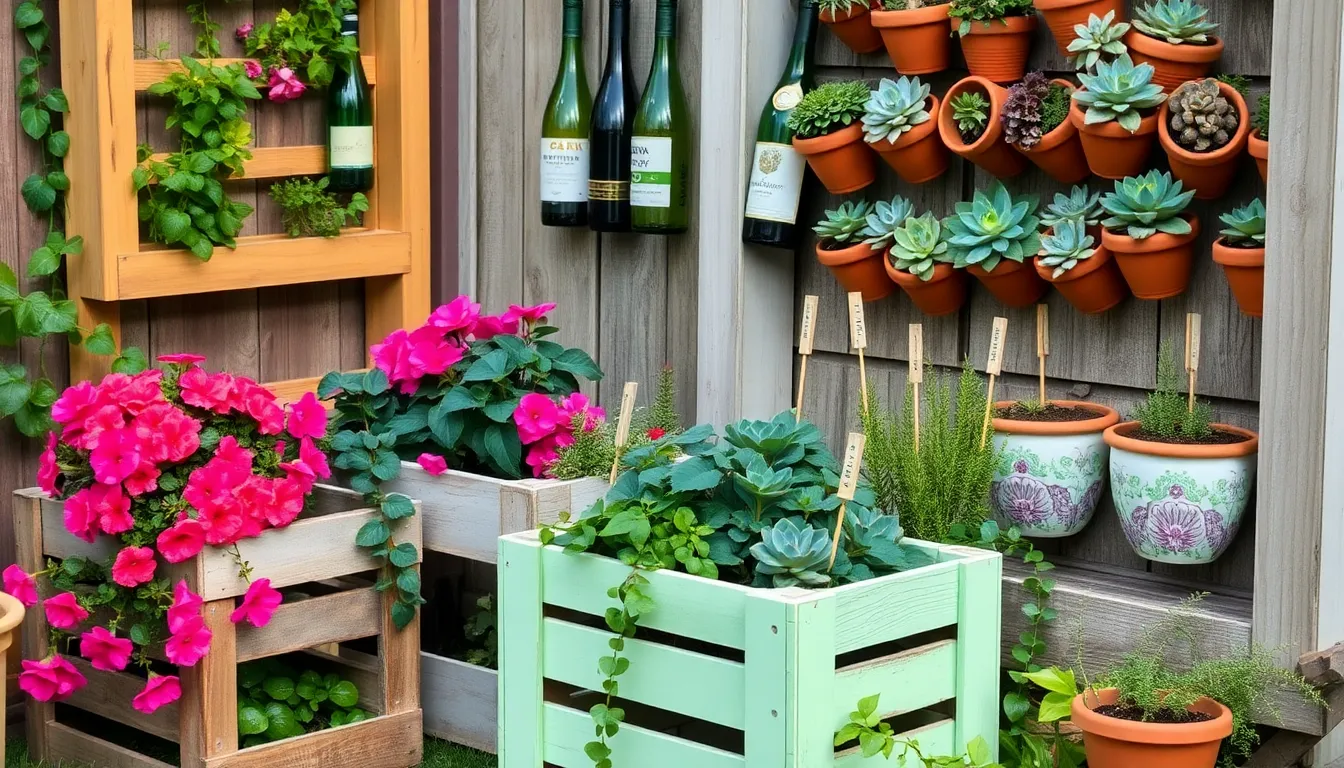Welcome to the joyful world of balcony gardening, where a touch of green can transform even the smallest urban spaces into thriving oases. Whether you’re a seasoned gardener looking to expand your leafy horizons or a beginner eager to embark on a new horticultural adventure, this guide to the “10 Best Plants for Apartment Balconies” is your trusted companion. These carefully selected plants not only beautify your living space but also offer a sense of accomplishment as you nurture them to flourish.
In this guide, you’ll discover plants that are perfectly suited for compact outdoor living areas, bringing vibrancy and life to your balcony. From lush greenery to colorful blooms, each plant on this list is chosen for its adaptability and ease of care, ensuring that you can enjoy gardening success regardless of your experience level. As you explore the practical tips and techniques provided, you’ll gain confidence in your ability to cultivate a personal paradise right outside your door, reaping the rewards of your efforts with each new leaf and blossom.
Compact Cherry Tomato Plants (High-Yield Varieties)

Compact cherry tomato plants are a fantastic choice for apartment balconies due to their small size and high yield. They thrive in containers, making them ideal for limited spaces, and with the right care, you can enjoy juicy, fresh tomatoes right at your fingertips.
To get started, choose a container that is at least 12 inches deep and has good drainage holes. Fill it with high-quality potting soil mixed with compost to provide the necessary nutrients for robust growth.
Cherry tomatoes require 6 to 8 hours of sunlight daily, so place your container in the sunniest spot on your balcony. If sunlight is limited, consider using a grow light to supplement their needs, especially during the shorter days of winter.
Watering is crucial as tomatoes prefer consistent moisture; aim to keep the soil evenly moist but not waterlogged. During the growing season, fertilize your plants every two weeks with a balanced liquid fertilizer to encourage healthy growth and fruit production.
- Support your plants with small stakes or cages to keep them upright as they grow.
- Prune the suckers—small shoots that develop between the stem and branches—to direct energy into fruit production.
- Harvest tomatoes when they are fully colored and slightly soft to the touch for the best flavor.
For those looking to maximize yield, consider experimenting with specific high-yield varieties like ‘Tiny Tim’ or ‘Sweet 100’. These varieties are known for their compact size and prolific fruiting, making them perfect for small spaces.
Dwarf Lavender (Fragrant and Pollinator-Friendly)
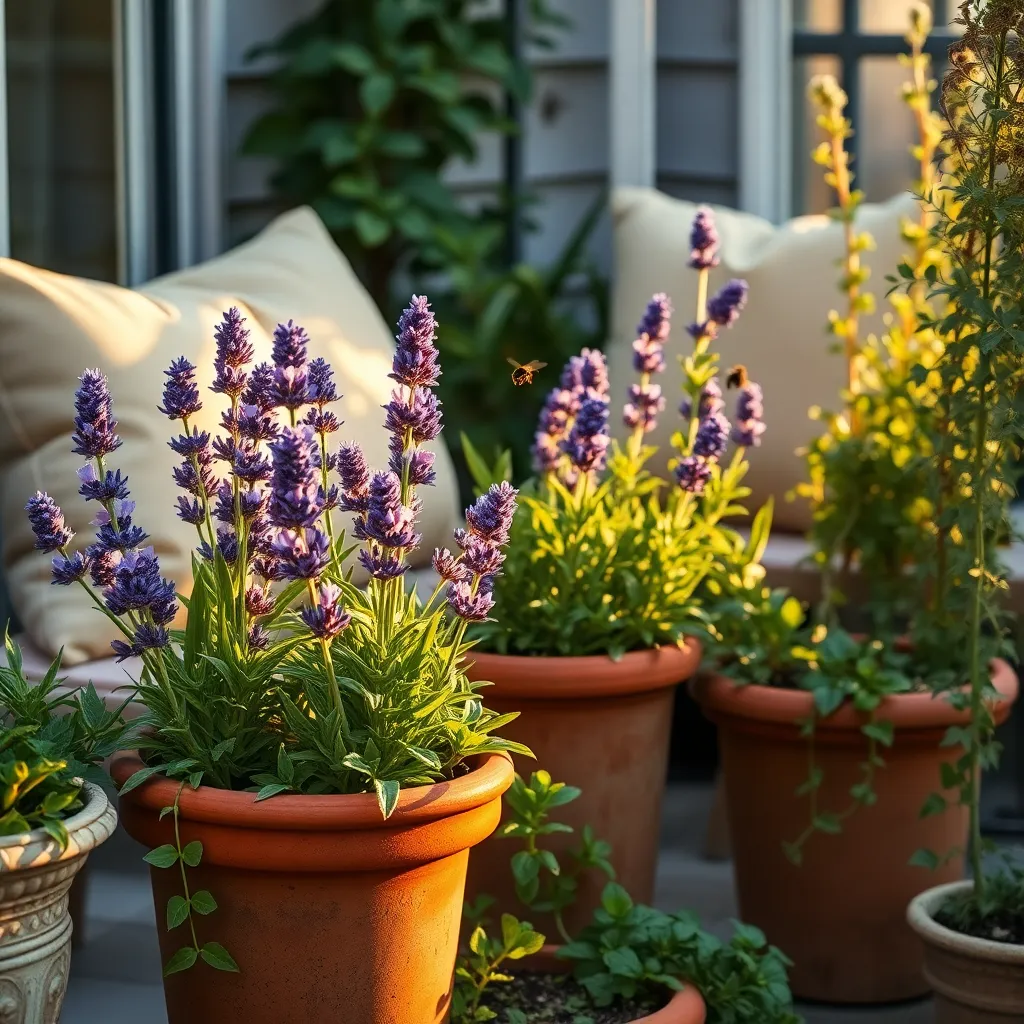
Dwarf lavender is an excellent choice for apartment balconies due to its compact size and delightful fragrance. This hardy plant thrives in containers, making it perfect for small spaces while attracting pollinators like bees and butterflies.
Ensure your dwarf lavender receives plenty of sunlight by placing it in a spot that gets at least six hours of sun per day. Use a well-draining potting mix, as lavender prefers dry conditions and does not tolerate waterlogged soil.
Water your lavender sparingly, allowing the soil to dry out between waterings to prevent root rot. During the growing season, you can promote bushy growth by occasionally pinching off the tips of the stems.
Consider incorporating a slow-release fertilizer in the spring to provide your lavender with the nutrients it needs over time. For those looking to maintain a tidy appearance, prune your plant after its first flowering to encourage a second bloom and keep it looking its best.
Snake Plant (Low-Light Tolerant and Air-Purifying)
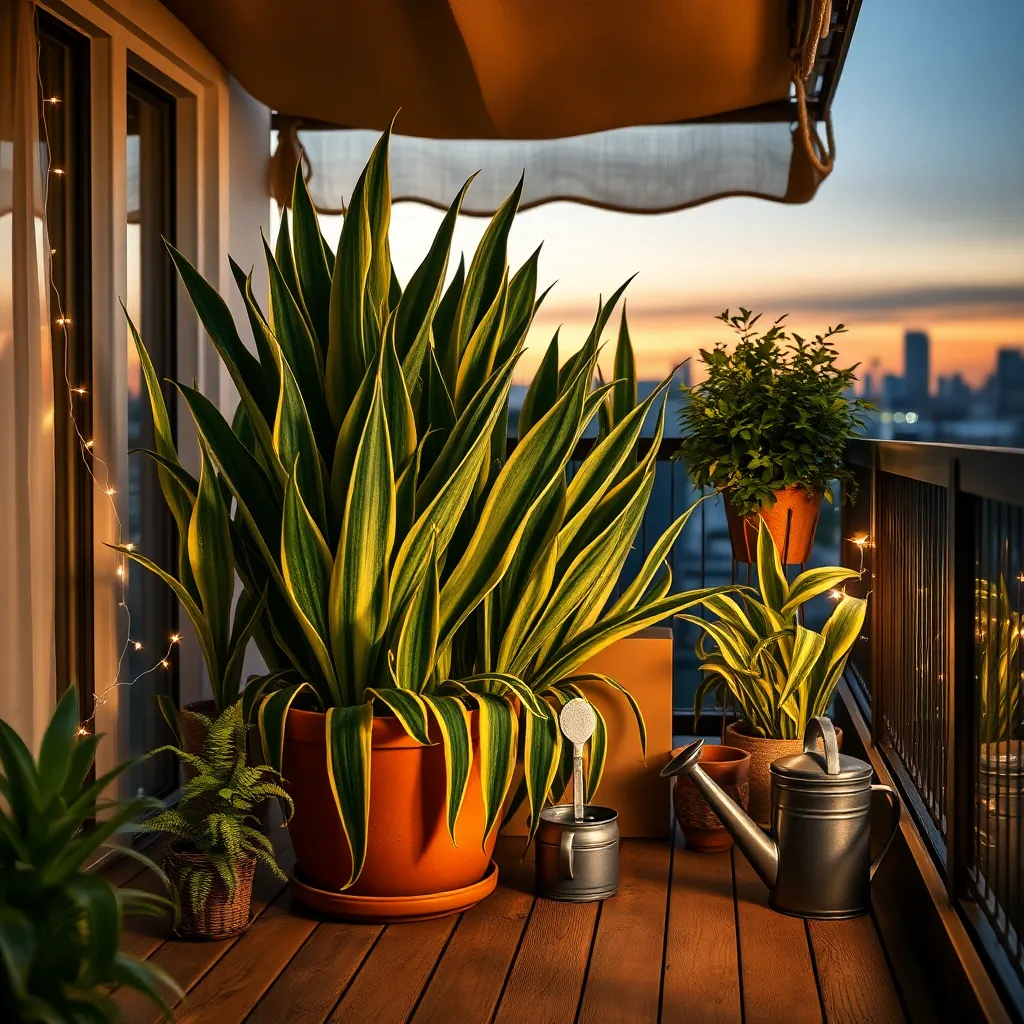
Known for their resilience, snake plants thrive in low-light conditions, making them ideal for apartment balconies with limited sunlight. These hardy plants are also renowned for their air-purifying abilities, effectively removing toxins such as formaldehyde and benzene from the air.
When growing snake plants, it’s essential to use a well-draining potting mix, such as a cactus blend, to prevent root rot. Watering should be infrequent; allow the soil to dry completely between waterings to mimic their native arid environment.
For beginners, snake plants are forgiving and easy to care for, requiring minimal maintenance. Advanced gardeners can experiment with propagation by dividing the rhizomes or placing leaf cuttings in water until they develop roots.
To ensure optimal growth, place the snake plant in an area with indirect sunlight, though it can tolerate both full shade and direct light. During the growing season, consider feeding them with a diluted all-purpose fertilizer every couple of months to promote lush foliage.
Miniature Herb Garden Kits (Culinary Freshness)
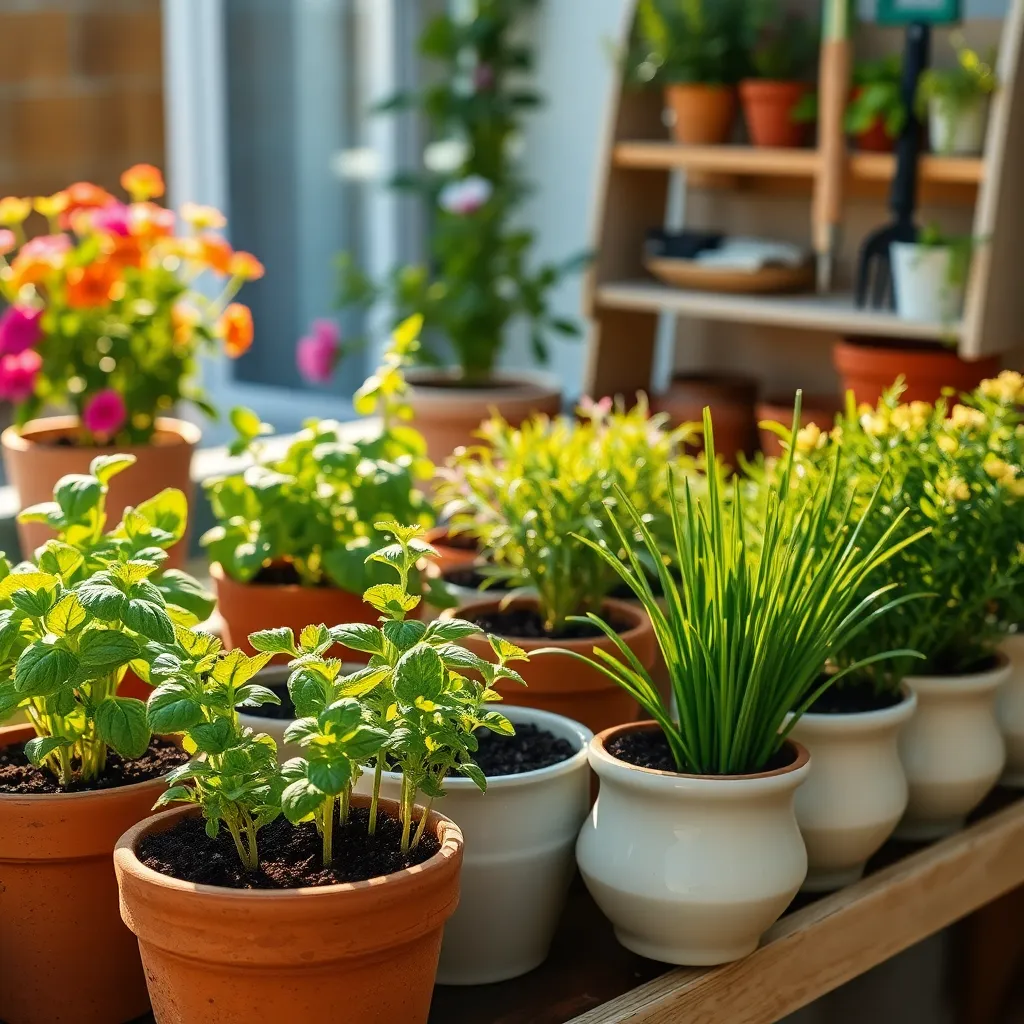
Creating a miniature herb garden kit is an excellent way to bring culinary freshness to your apartment balcony. These kits are perfect for small spaces and offer a convenient way to grow herbs like basil, parsley, and thyme right outside your kitchen window.
Begin by choosing a container with good drainage, as herbs dislike waterlogged roots. A soil mix that includes perlite or sand will help improve drainage and is ideal for most culinary herbs.
Watering is key—herbs generally prefer to dry out slightly between waterings. Check the soil moisture by inserting your finger about an inch deep; if it feels dry, it’s time to water.
Position your herb garden in a location where it will receive at least 6 hours of sunlight per day, as most herbs thrive in bright, direct light. If your balcony doesn’t get enough sun, consider using a small grow light to supplement natural light.
For those looking to optimize their herb production, regular harvesting encourages new growth. Snip herbs in the morning when the essential oils are most concentrated, which will enhance their flavor in your dishes.
Trailing Ivy Geraniums (Vibrant Blooms and Space-Saving)
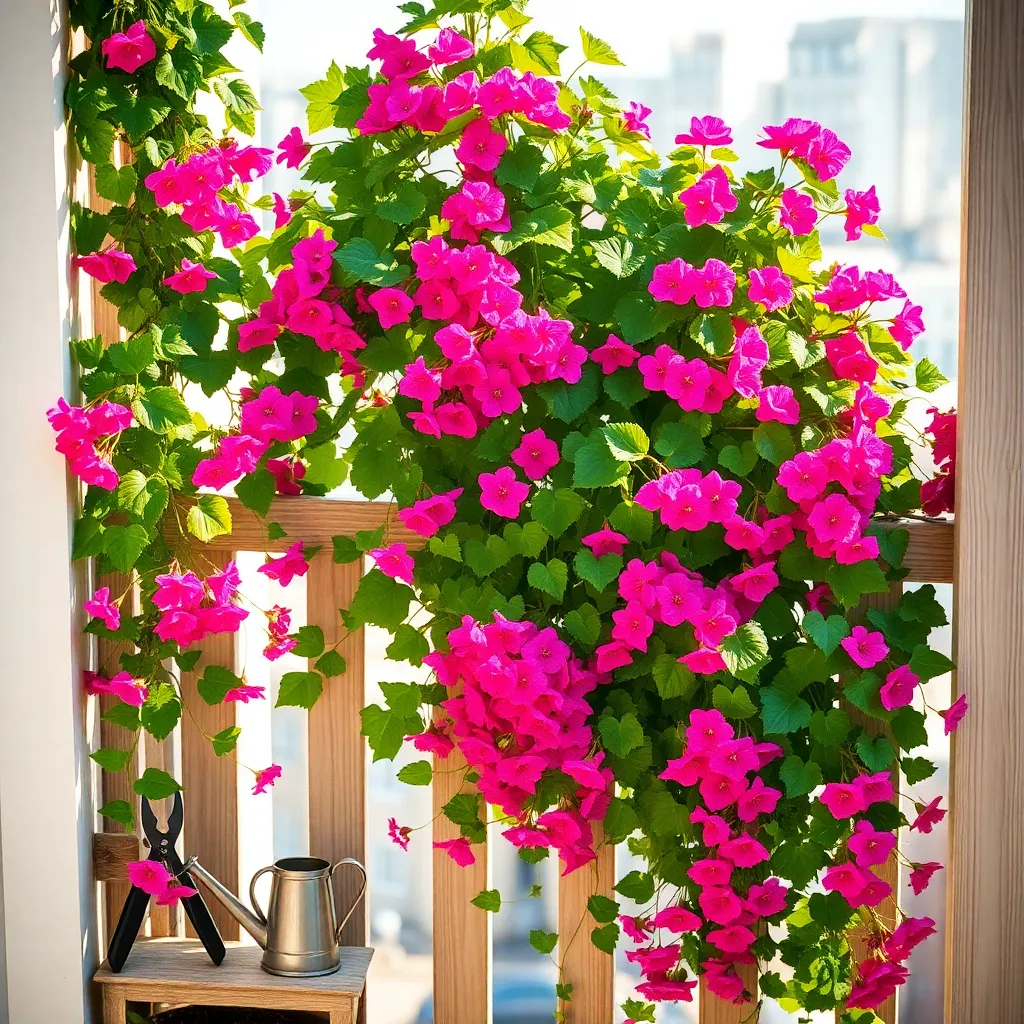
Trailing Ivy Geraniums are a delightful choice for apartment balconies, offering vibrant blooms while saving space. These plants thrive in hanging baskets or containers, where their cascading foliage creates a lush, colorful display.
To ensure your Ivy Geraniums flourish, position them in a spot with plenty of sunlight, ideally receiving at least six hours of direct sun each day. They prefer well-draining soil, so consider using a potting mix specifically designed for container plants to prevent waterlogging.
Keep the soil consistently moist but not soggy by watering when the top inch feels dry to the touch. During the growing season, a balanced liquid fertilizer applied every two weeks will encourage continuous blooming and healthy growth.
For advanced gardeners looking to enhance their Ivy Geraniums’ performance, consider pinching back the stems early in the season. This technique promotes a bushier growth habit and more abundant flowers, ensuring your balcony is bursting with color all summer long.
Self-Watering Planters (Maintenance-Free Hydration)
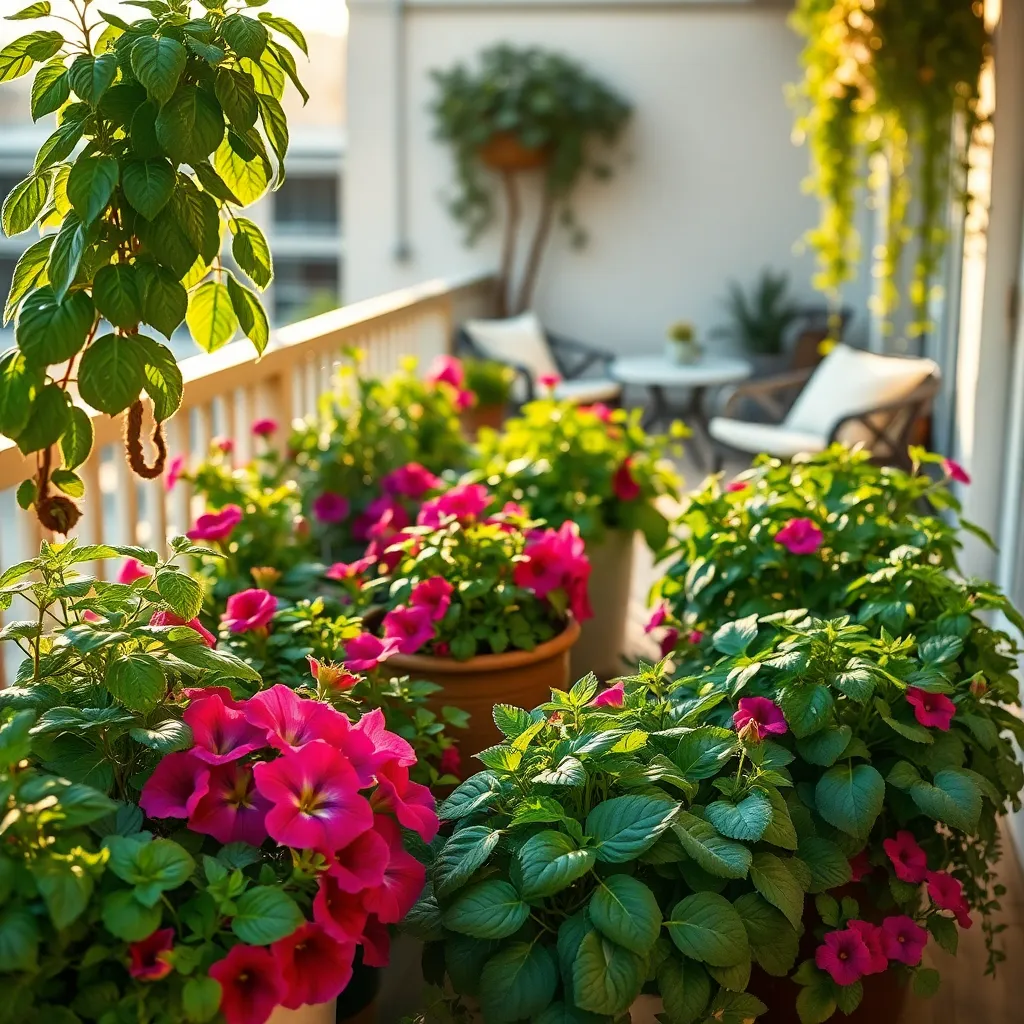
Incorporating self-watering planters into your balcony garden can significantly reduce the time you spend worrying about hydration. These planters are designed to provide a consistent moisture supply, making them ideal for busy urban gardeners who want to minimize maintenance.
To get started, choose a self-watering planter that suits your space and the size of your plants. Look for options with a water reservoir and a wicking system, as these features ensure the soil remains moist without overwatering, which is crucial for healthy growth.
Most self-watering planters are suitable for a variety of plants, including herbs, flowers, and small vegetables. Ensure your planter has adequate drainage holes and use a lightweight potting mix that allows roots to breathe, enhancing the plant’s overall health and productivity.
For optimal results, check the water level in the reservoir weekly, especially during hot weather when plants may consume more water. For more advanced gardeners, adding a diluted liquid fertilizer to the reservoir can provide a steady supply of nutrients, further promoting vibrant growth.
Dwarf Citrus Trees (Zesty Fruits in Small Spaces)
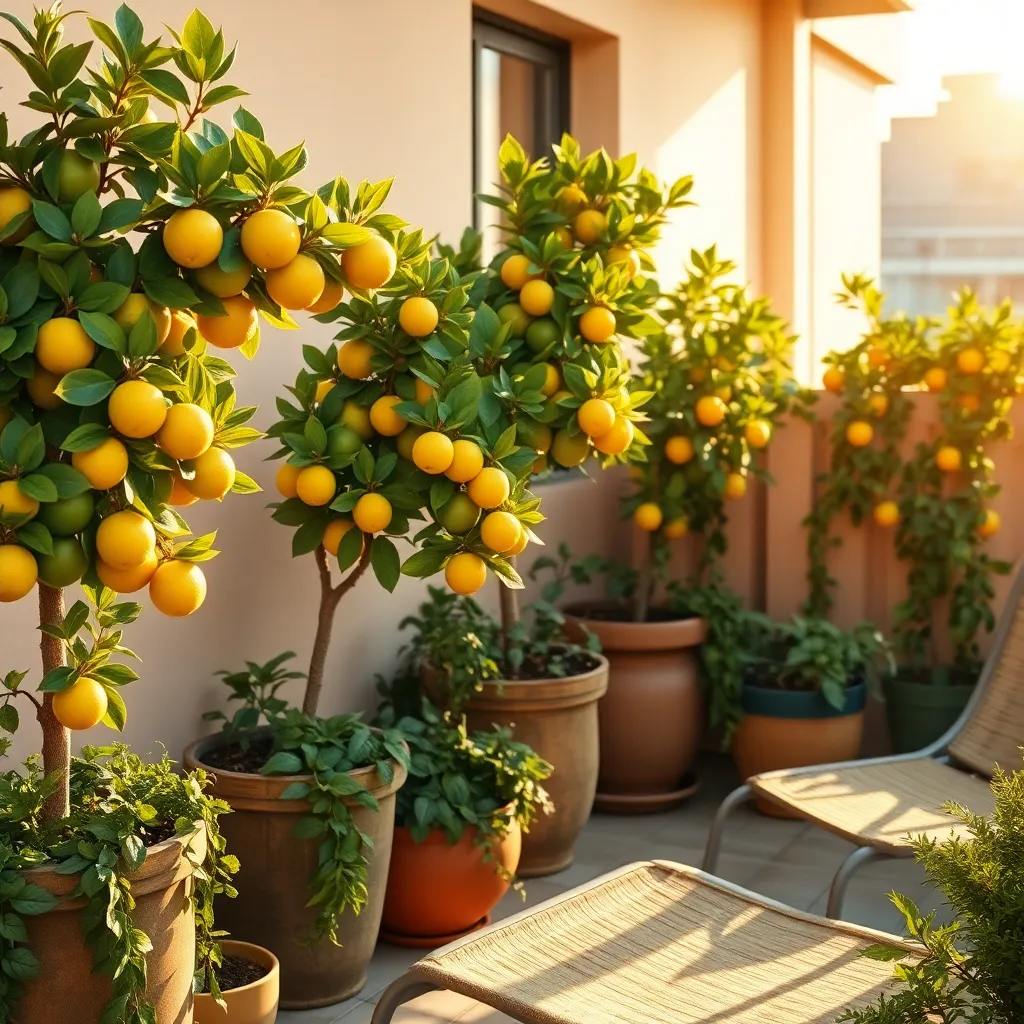
Dwarf citrus trees are perfect for apartment balconies, offering vibrant fruits while occupying minimal space. These compact trees, such as dwarf lemon or lime, thrive in containers and can produce fruit year-round with the right care.
Choose a container with drainage holes and use a well-draining potting mix, ideally one formulated specifically for citrus. Regular watering is crucial, but ensure the soil dries out slightly between waterings to prevent root rot.
Position your dwarf citrus tree in a sunny spot, as they require at least six hours of direct sunlight daily. If natural light is limited, consider supplementing with a grow light to ensure your tree receives adequate light exposure.
Fertilizing is essential for fruit production and should be done every month during the growing season with a balanced citrus fertilizer. Pruning is another key practice, helping to maintain shape and encourage new growth, which can be done in late winter or early spring.
Vertical Garden Trellises (Maximize Balcony Space)
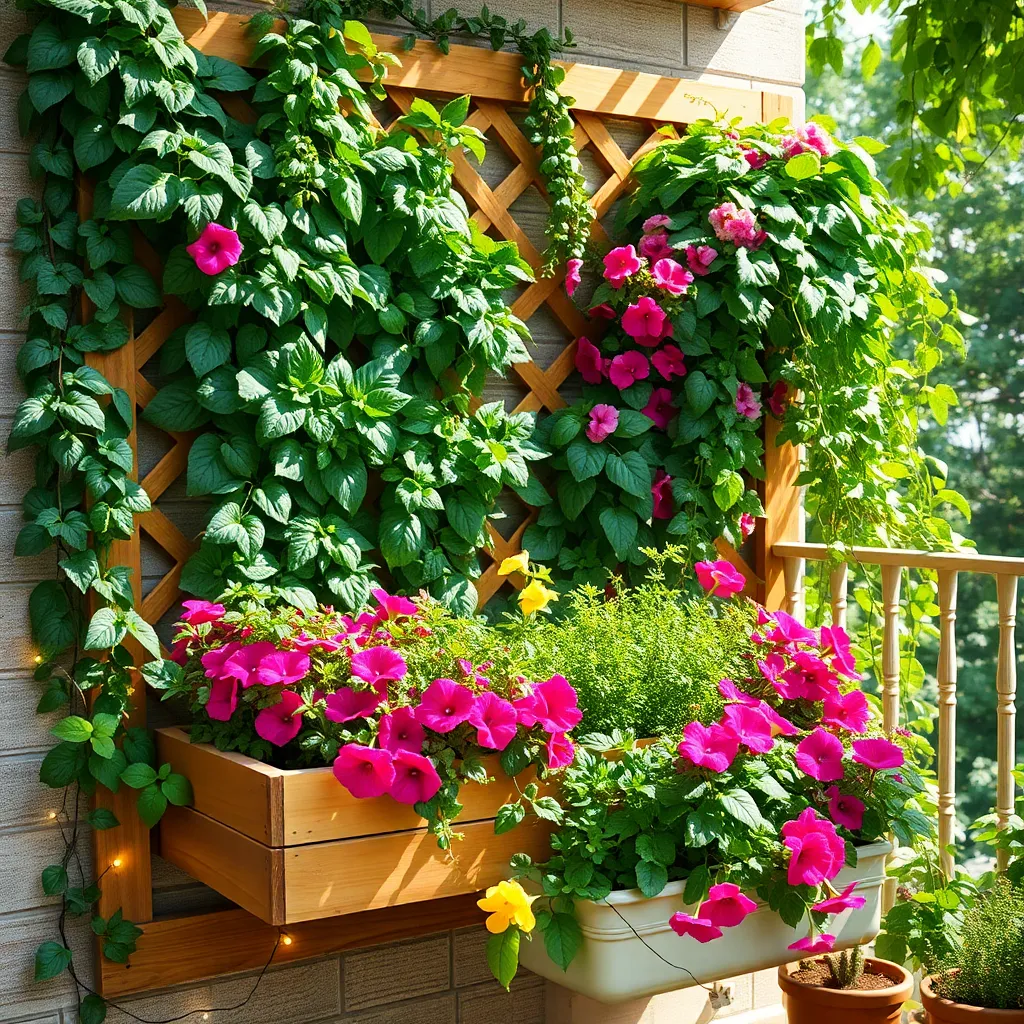
Vertical garden trellises can transform a small balcony into a lush, thriving space. By utilizing vertical space, you not only maximize your greenery but also add a stunning visual element to your apartment.
Choose sturdy trellises made of materials like metal or wood that can withstand the elements. Securely anchor them to ensure stability, especially if you live in a windy area.
When selecting plants for your trellis, consider fast-growing vines like sweet peas or morning glories. These plants thrive in containers and need a sunny spot to flourish, requiring at least six hours of direct sunlight daily.
Water your vertical garden regularly, ensuring that the soil remains moist but not waterlogged. Use a high-quality potting mix with good drainage to prevent root rot and promote healthy growth.
For advanced gardeners, experiment with edible climbing plants like pole beans or tomatoes, which can add a tasty dimension to your vertical garden. Train these plants to climb by gently tying them to the trellis with soft twine as they grow.
Succulent Variety Packs (Drought-Resistant Beauties)
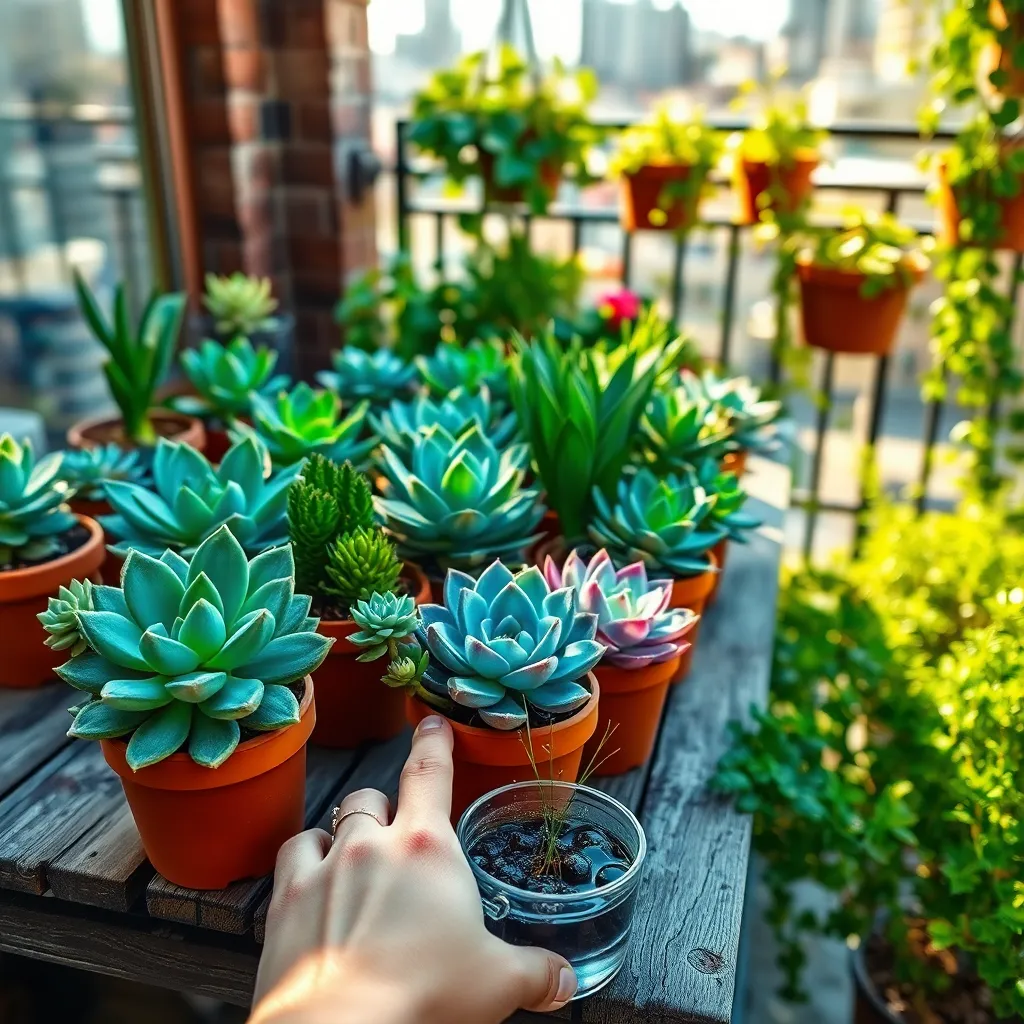
Succulent variety packs are a fantastic choice for apartment balconies, offering a diverse array of shapes and colors. These drought-resistant beauties require minimal watering, making them perfect for busy city dwellers who might not have the time for daily plant care.
To thrive, succulents need a well-draining soil mix, such as one composed of equal parts regular potting soil, coarse sand, and perlite. Place them in containers with drainage holes to prevent water from pooling, which can lead to root rot.
Position your succulents where they can soak up plenty of sunlight, ideally on a south or east-facing balcony. If your balcony doesn’t get enough natural sunlight, consider using a grow light to supplement their light needs.
Water your succulents sparingly, allowing the soil to dry out completely between waterings. During winter months, reduce watering frequency to once every few weeks, as succulents enter a dormant phase and require even less moisture.
For those looking to expand their succulent collection, propagating is a rewarding and cost-effective method. Simply snip off a healthy leaf, let it dry for a couple of days, and then place it on top of soil; soon, you’ll see roots forming.
Compact Jasmine (Sweet Scented Climbers)
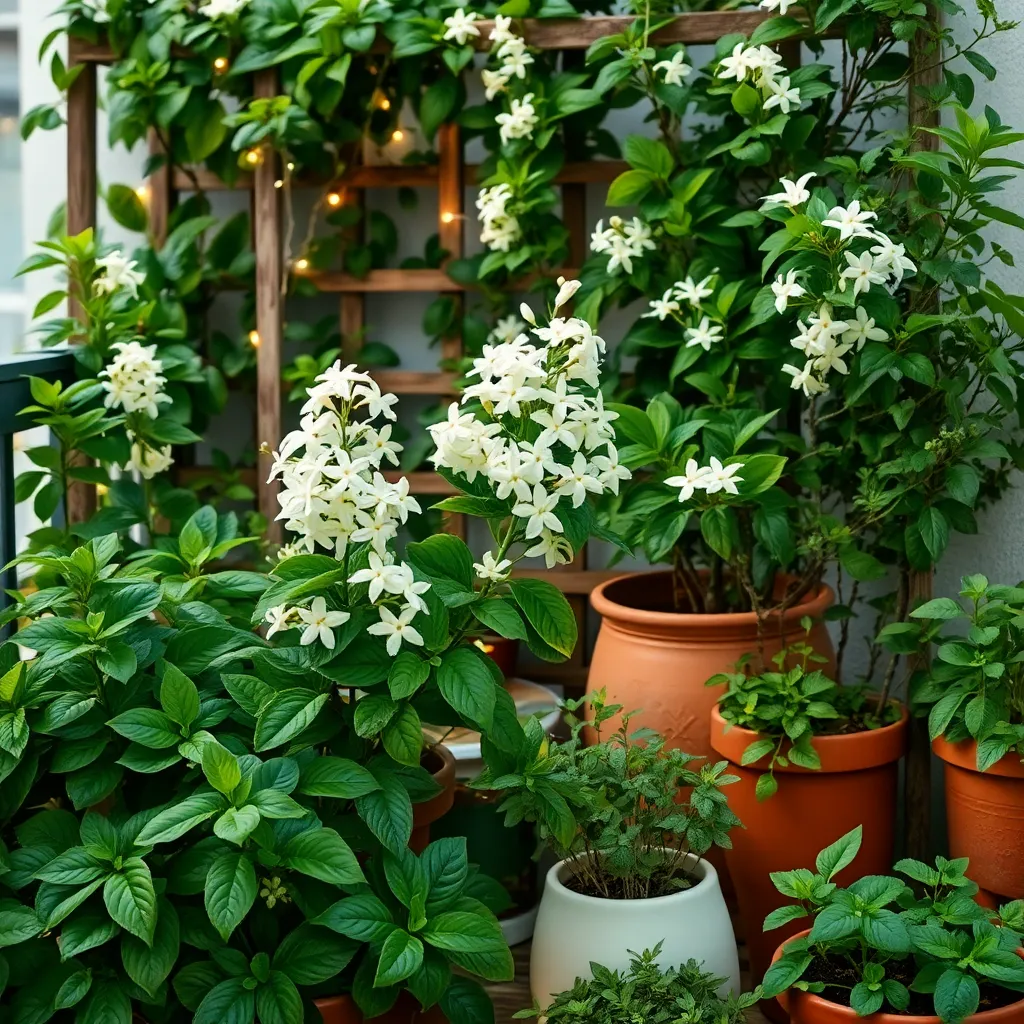
Compact Jasmine, known for its sweet fragrance and climbing nature, is an excellent choice for apartment balconies. These climbers thrive in containers, making them ideal for small spaces where you want to introduce both beauty and aroma.
To ensure your jasmine blooms profusely, place it in a spot that receives at least six hours of direct sunlight each day. For the best results, use a well-draining potting mix enriched with organic matter, which helps retain moisture while preventing root rot.
Regular watering is crucial, especially during the growing season, so ensure the soil is kept evenly moist but not waterlogged. In the winter months, you can reduce watering frequency, allowing the top inch of soil to dry out between waterings to prevent overwatering.
Advanced gardeners can encourage bushier growth by pinching back new stems, promoting a denser foliage cover. Train your jasmine using a trellis or balcony railing, guiding the vines gently as they grow to create a lush, green screen that enhances privacy and aesthetics.
Conclusion: Growing Success with These Plants
As we explored the 10 best plants for apartment balconies, we uncovered key insights for enhancing your relationship with your living space and, by extension, with yourself and others. From the resilient succulents symbolizing adaptability, to the vibrant geraniums representing mutual support, each plant offers a unique lesson on nurturing connections. The calming lavender teaches the power of tranquility, while the cheerful marigolds remind us of the joy found in shared moments. By embracing the diversity of ferns and the steadfastness of evergreens, you can cultivate resilience and consistency in your relationships. The aromatic herbs offer lessons in growth and renewal, while the climbing ivy encourages reaching new heights together.
Now, take a moment to step onto your balcony, breathe, and consider which plant best reflects the relationship you wish to cultivate. As you embark on this journey of growth, remember to save or bookmark this article so you can revisit these botanical relationship lessons anytime you need a refresher. With each nurturing step, your relationships will thrive, rooted in care and understanding. Here’s to a flourishing future, where your connections grow as beautifully as your balcony garden.

